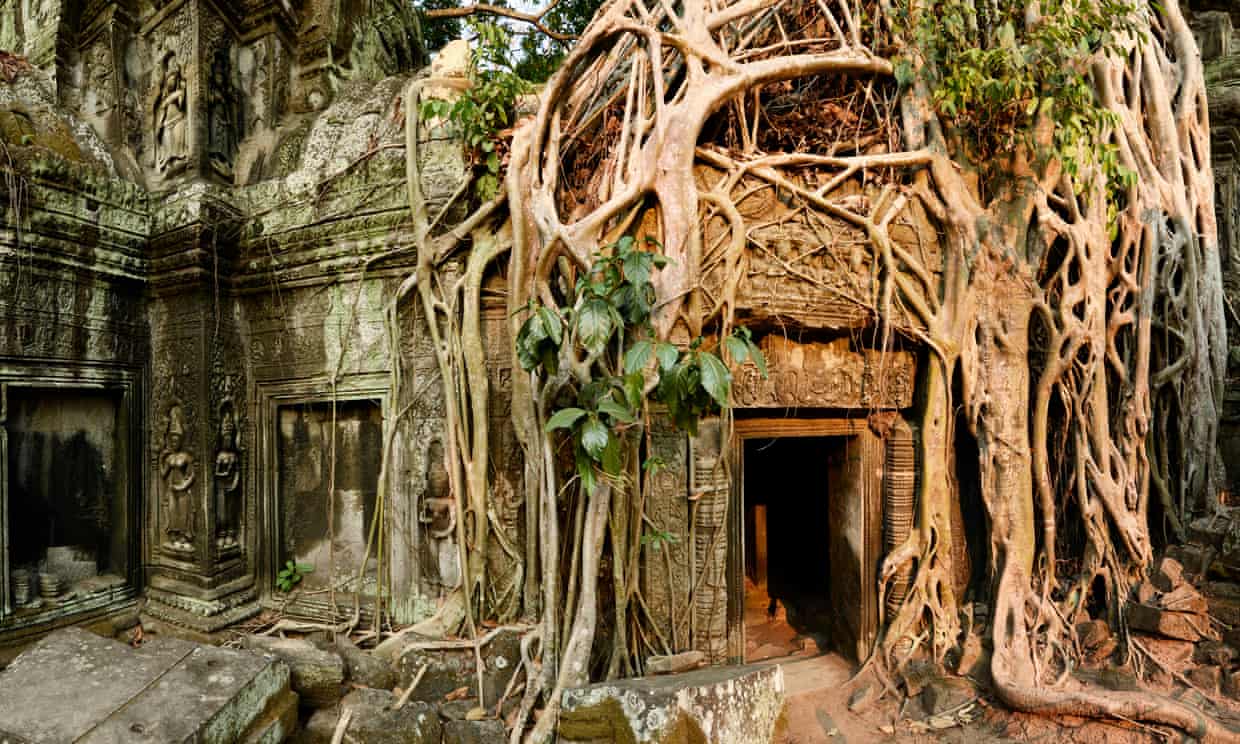

Temple Run is a relentlessly addictive computer game. The concept is simple enough. You’ve stolen a cursed idol from an ancient crumbling temple and now you have to run for your life to escape the evil monkeys gnashing at your heels. The temple run I am doing, however, is much slower, far less frantic and it only features a handful of snoozing macaques. But it is so infinitely more life-affirming.
The temples I’m jogging round are the colossal remains of the city of Angkor, often referred to as the eighth wonder of the world. Nothing quite prepares you for the mind-blowing magnitude and timeless beauty of the complex. Between the 9th and 15th centuries, Angkor was the capital of the triumphalist Khmer empire. At the peak of its power it was home to an estimated 1 million people. By contrast, the population of London at that time was 50,000. Rebellions, sackings, migration and crop failure finally forced its abandonment and, as the people moved out, the jungle quickly moved in, smothering the carved stones with snaking roots and thick foliage.
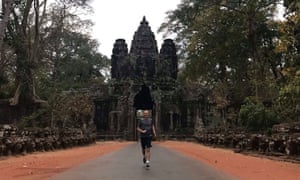
After several hundred years, Angkor was “discovered” by French explorers in the 19th century and its temples slowly became one of the major draws of Asia. In the first few months the site was “open” in 1868, an estimated 200 people visited (this was in the days before TripAdvisor). Nowadays more than 2 million tourists tramp around the monuments every year.
On this particular morning, however, I have the place to myself. It’s 5am and I’m about to run 25km along the forest tracks and narrow roads that link the temples. My route will roughly follow the historic Petit Circuit, a path that always used to be undertaken by elephant. Beginning at Angkor Wat, I’ll take in the big-hitters of Angkor Thom, Ta Prohm, Bayon and Banteay Kdei, as well as some of the more minor but equally astonishing buildings of Baphoun, the Terrace of the Leper King and the Terrace of the Elephants, before returning to Angkor Wat. The run is not an official event – far from it. It’s been laid on for me as a guest of the nearby Anantara hotel in Siem Reap. I am, in fact, the only entrant – which handily means I’m a dead cert for the gold. Joining me for my solo adventure is Boray the tuktuk driver.
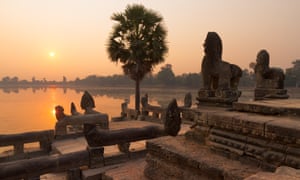
With Angkor Wat behind me, I start to trot into the dark. It’s very warm and the only sound is the quiet puttering of Boray’s support tuktuk. I don’t think I have ever run anywhere so atmospheric. Boray points out the route and occasionally hands me a freezing cold face flannel. It’s very hot and I’m wet with sweat. I have to keep stopping, not for breath but just to gawp in amazement.
After more than an hour we stop by a shimmering expanse of water known as Srah Srang. It was hacked out of the jungle more than 1,000 years ago as a bathing lake for the god-king Rajendravarman II. Boray unpacks a simple breakfast picnic for me – tropical fruit, yogurt and lots of water. We sit and watch the sun ease itself up into the sky. We are joined by some monkeys and a decrepit little dog who is so delighted to be stroked that she giddily bounces along with me afterwards, glancing over her shoulder.
I run on and on, passing more and more temples – each a teetering stack of stones piled on each other like a huge game of Jenga. Finally, after almost three hours, I find myself back at the start at Angkor Wat. Boray grins and hands me an ice-cold Coke. I tell him it’s one of the best runs of my life. He nods happily, but I don’t think he has any idea what I’m jabbering about. He says he’s never been for a run…
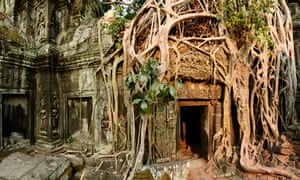
I climb into his tuktuk and Boray drops me back at the hotel. There, I find my wife also immersing herself in the marvels of early Cambodian culture. She’s having a 90-minute Khmer massage courtesy of the hotel. She’s had to put on a snug all-in-one robe and has then been given a vigorously therapeutic workover. Later, over a huge breakfast of croissants and fresh fruit, she says she feels exhausted. Her massage “went on for ages”.
Later that day and all the next, we return to the temples. Watching the sun rise over Angkor Wat may well be on the bucket list of virtually every tourist in southeast Asia, but that doesn’t make it any less skin-tinglingly spectacular. Our guide book told us to avoid dawn as that’s when it was most crowded, but strangely we found the opposite – and the dawn brings its own immutable magic.
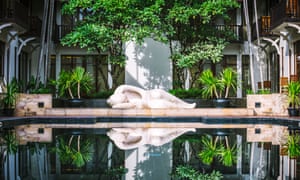
Only 28 temples can be visited, but it’s estimated there are about 1,000 strewn across the jungle. The city of Angkor would have been a medieval metropolis. Its scale is mind-boggling. It is thought Angkor Wat, one of the most famous religious buildings in the world, was heaved into existence by a labour force of 300,000 people and 6,000 elephants. But the Wat isn’t even the largest construction – that honour goes to Angkor Thom. Set over 10 sq km, it’s enclosed by an 8m-high wall that skirts a 100m-wide moat in a gargantuan 13km square. At its centre is the bizarre edifice of Bayon. It was the state temple of Jayavarman VII – known by all the guides as J 7, which makes him sound like a boy band or an alcopop. Bayon has 54 crumbling towers embossed with 216 vast and enigmatically smiling faces. Then there is 1.2km of bas-reliefs incorporating more than 11,000 figures. With your eyes still bulging, you exit and stumble towards Ta Prohm. This is the temple, devoured by the jungle, which featured in Tomb Raider, starring Angelina Jolie.
Angkor is a wonder of the ancient world, but contemporary Cambodia has much more going for it than just these charismatic stones. After a few days in the town of Siem Reap, we catch the bus to Battambang, the country’s third city. With its genteel colonial architecture (Cambodia was a French protectorate until 1953), it’s a chaotic mixture of laid-back cafés, bustling markets, backpacker hostels and up-and-coming galleries. It’s also where Angelina Jolie owns a house.
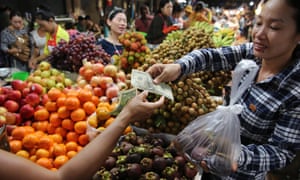
But we are in no mood for celebrity culture. For us the big thrill is the local bat cave. Just a few miles outside town is Phnom Sampeu, a scrappy rock face that’s home to more than 1m wrinkle-lipped bats – one of the largest colonies in the world. Come dusk, they stream out of the fissures in the cliff and head to the fields (or as our guide jokes “to the nightclub”) to get to work eating insects and pests. There are so many it takes more than half an hour for them all to fly past.
From Battambang we head to the capital. Even after 10 days acclimatising to Cambodia, the colour, heat, noise, dirt and pandemonium of Phnom Penh takes your breath away – it’s not so much an assault on the senses as an all-out punch-up. But the energy is infectious. Scooters weave everywhere carrying anything from children to monks and live chickens to dead pigs. Other than sitting on a stool at the market eating something strange (anyone for barbecued rats or deep-fried tarantulas?), the two architectural gems you can’t miss are the Royal Palace, with its 90kg solid-gold Buddha, and the Silver Pagoda, so called because it has 5,000 1.1kg silver floor tiles. You may have walked on sunshine before, but this is the only time you’ll ever walk on solid silver.
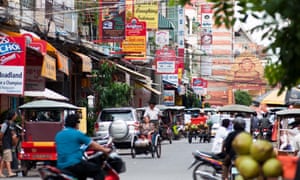
The final destination of our trip is Tuol Sleng – the high school which Pol Pot’s soldiers turned into a torture camp in 1975. In three years more than 17,000 people were held at the prison, and of these only seven survived. Visiting is a profoundly depressing and unsettling experience. It chills you even in the hot tropical sun. The reign of the Khmer Rouge has cast a long and traumatic shadow over Cambodia. It’s estimated that through starvation and executions at least one in four of the population died. Our guide tells us that three of his brothers starved to death and 16 of family were murdered. He had been eight years old when his family had to flee the capital for their lives.
It’s exactly 40 years since the evil regime was overthrown. And despite the bloodshed and brutality, the dubious leadership and the years of poverty, Cambodia’s people, incredibly, are still smiling.
The Guardian

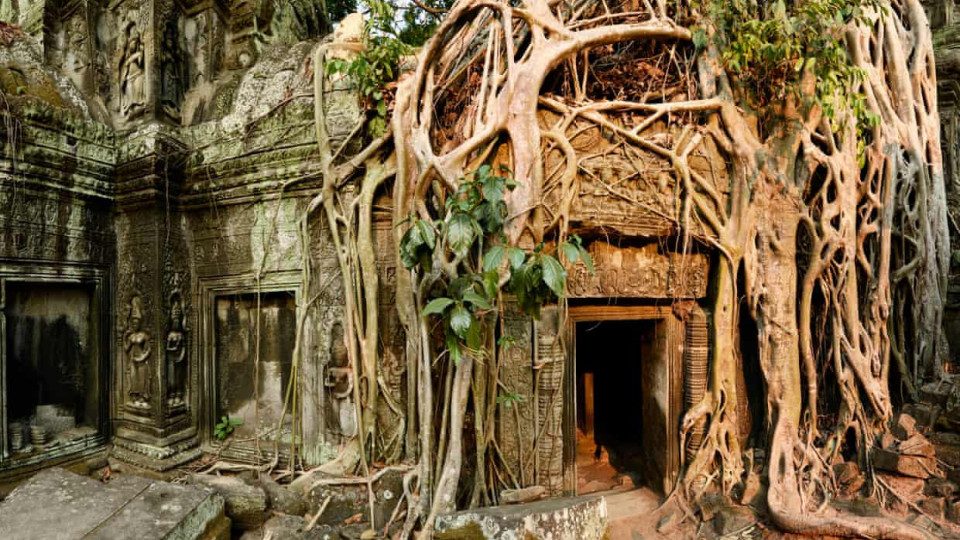
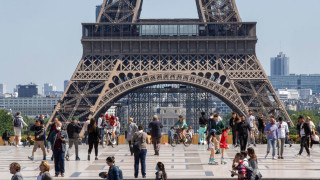






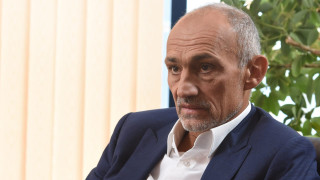

Leave a comment